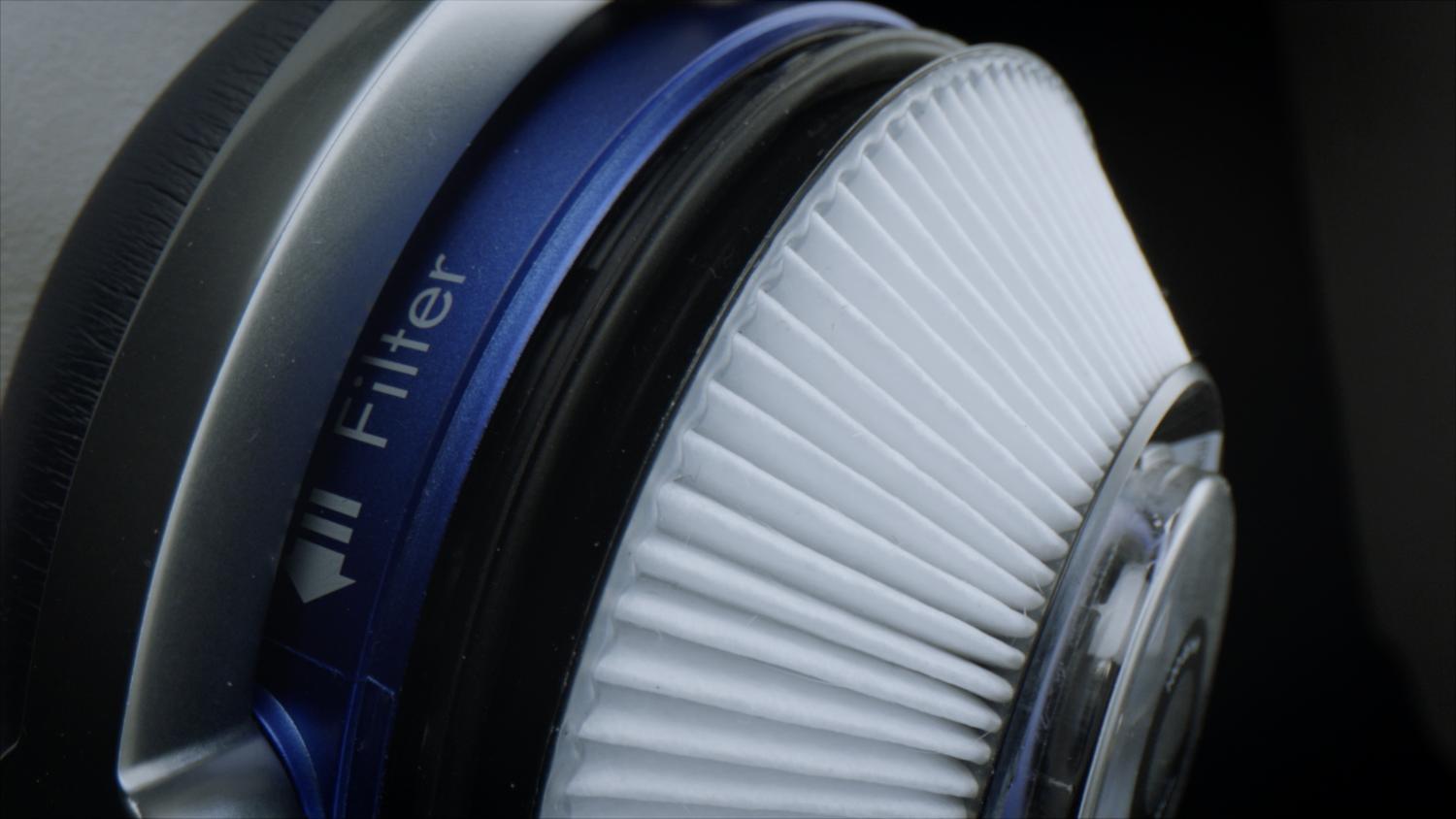Dyson Zone: Miniaturising Motors
The smallest in any Dyson machine, the earcup-mounted compressors in the Dyson Zone™ noise-cancelling headphones power purification on-the-go. Dyson’s history in motors dates back to 1999, pioneering ever more efficient motors bespoke engineered for individual Dyson machines.
It started with a problem. Using conventional motors in ever-more advanced Dyson cordless vacuums meant downsizing suction power. This was an unacceptable compromise, so a team of engineers and scientists set out to develop a more efficient and powerful alternative. The first two years were a technical struggle, but the team engineered a 1200 watt motor that ran up to 80,000 rpm.
The first fully fledged motor, the X020, went into production in 2006, spinning at 1,666 revolutions per second. Its origins lay in switched reluctance motor technology, but with its speed, size and diagnostic capabilities, it took the science to a new level. Subsequently the team launched a V2, V4, V6, V8 and V9 motor, each bespoke for its role within Dyson products. The latter powers the Dyson Supersonic hair dryer and is half the weight of a conventional hair-dryer motor and eight times faster, with a tiny axial-flow impeller and sensorless algorithm that makes up to 1,900 adjustments a second.
The compressor assemblies, one per earcup, are the beating heart of the Dyson Zone headphones. Battery-powered, the motors spin, drawing air through the filters and driving the compressor which builds up air pressure. The purified air is then channelled through carefully designed airflow pathways to the visor and delivered to the nose and mouth.
-

-
The motor assemblies are placed within the earcups – surprisingly the closest possible space to the ear. The motor development process was a constant trade-off between size, weight, product efficacy and airflow volumes whilst maintaining audio performance. With extremely tight tolerances, these tiny motors require precision manufacturing and individual balancing of each and every one. The balancing machine takes into consideration the tiny variations in weight, and then calculates how much material to remove for better performance, lower vibration and reduced noise.
As the motor spins, it generates noise, as do the litres of air it moves. If the motor is not well-housed, it will vibrate and contact other parts of the earcup, resulting in knocking or grinding noises as the two surfaces connect. Within the earcup, the motor is suspended from the outer shell by the soft mount scheme to avoid noise generated by the motor vibration. The more rigid a material or the more fixed two elements are together, the more vibration is passed through the materials.
To evaluate the efficiency of the soft mount scheme in reducing any noise generated by the motor moving within the earcup, the team developed the deflection rig. They used a pair of ear defenders adorned with accelerometers and measured the movement patterns of individuals when moving at different speeds – walking, rushing for the bus and going up stairs. The rig simulates the movement of an individual’s head to measure how well the soft mount scheme protects against movement on-the-go.
Press Contacts
-
Press Office
Email: press.office@dyson.com
-

.jpg?$responsive$)


